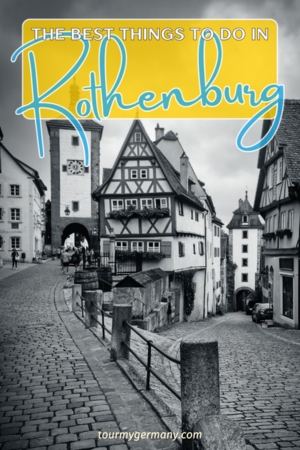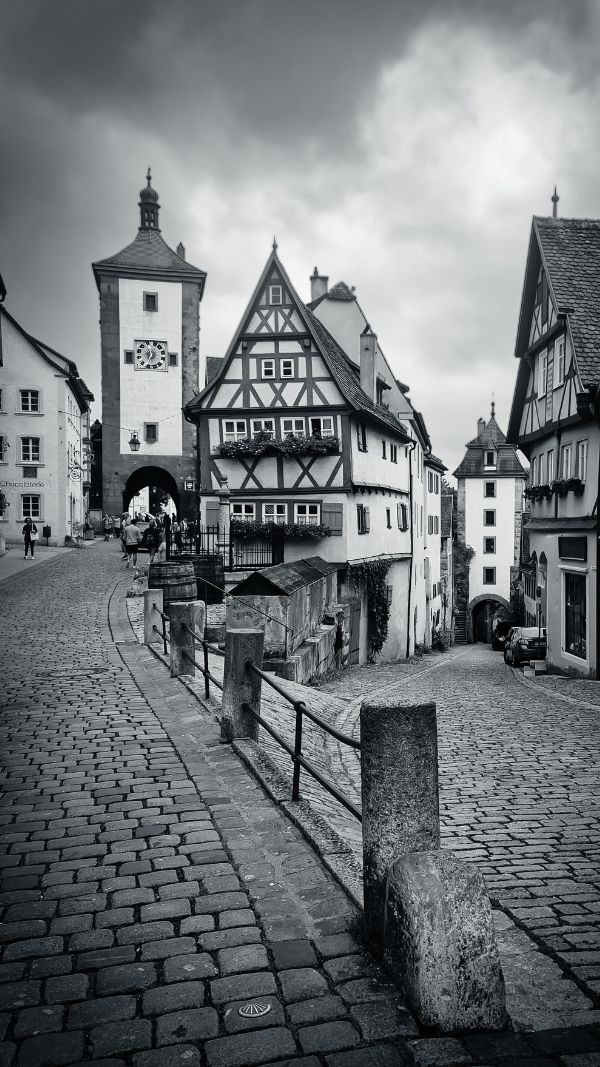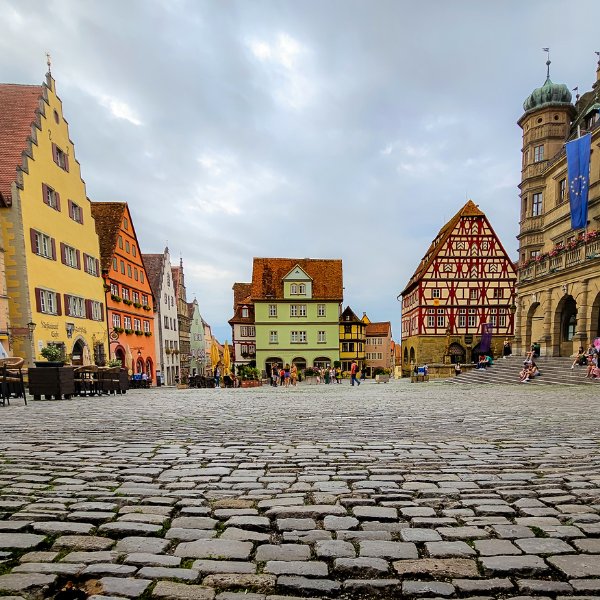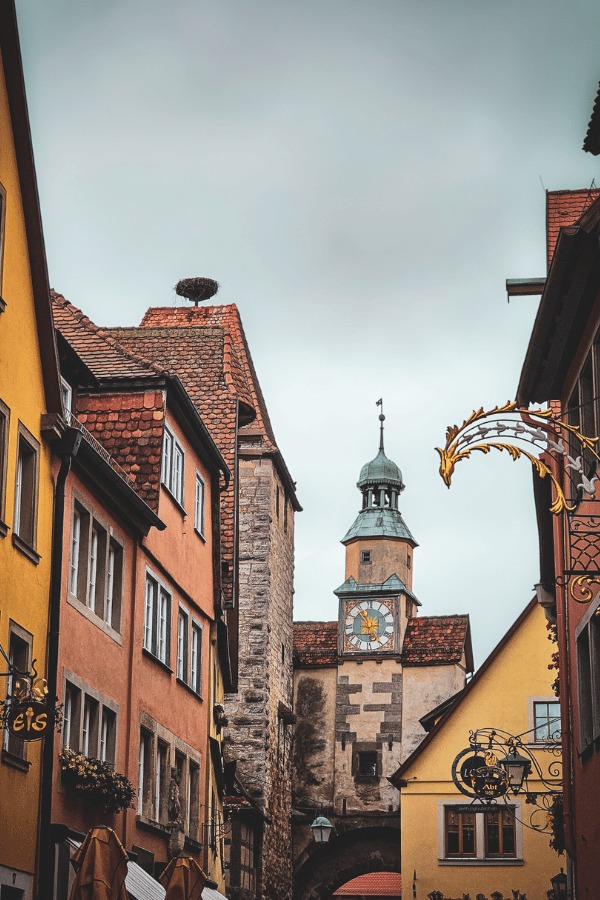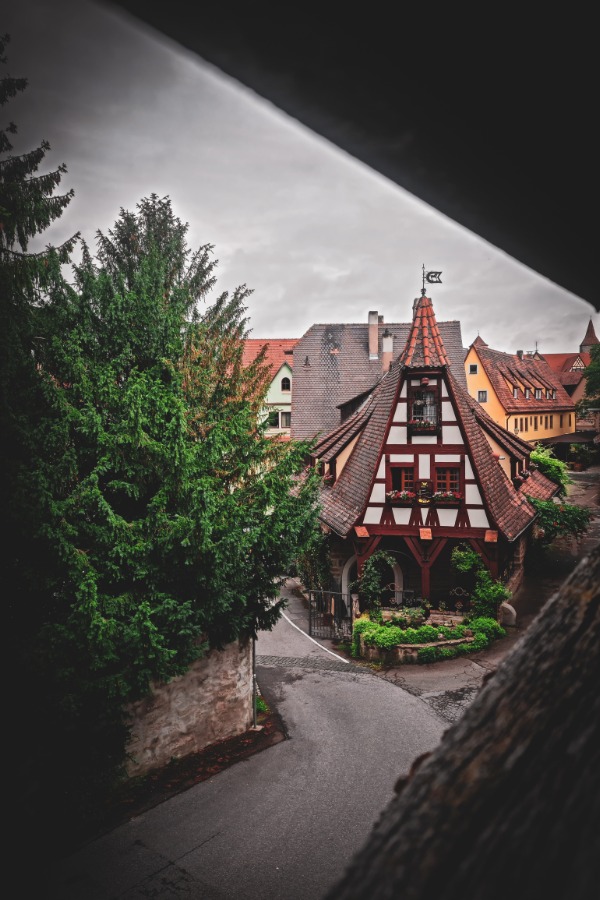Save up to 50% on all digital items with our Last Minute Christmas Sale on now!
Best Things to do in Rothenburg ob der Tauber
By: Eran Fulson / Traveler, writer, and curious observer of all things German.
Welcome to the best things to do in Rothenburg ob der Tauber, a place where stepping into the Middle Ages doesn't require a time machine.
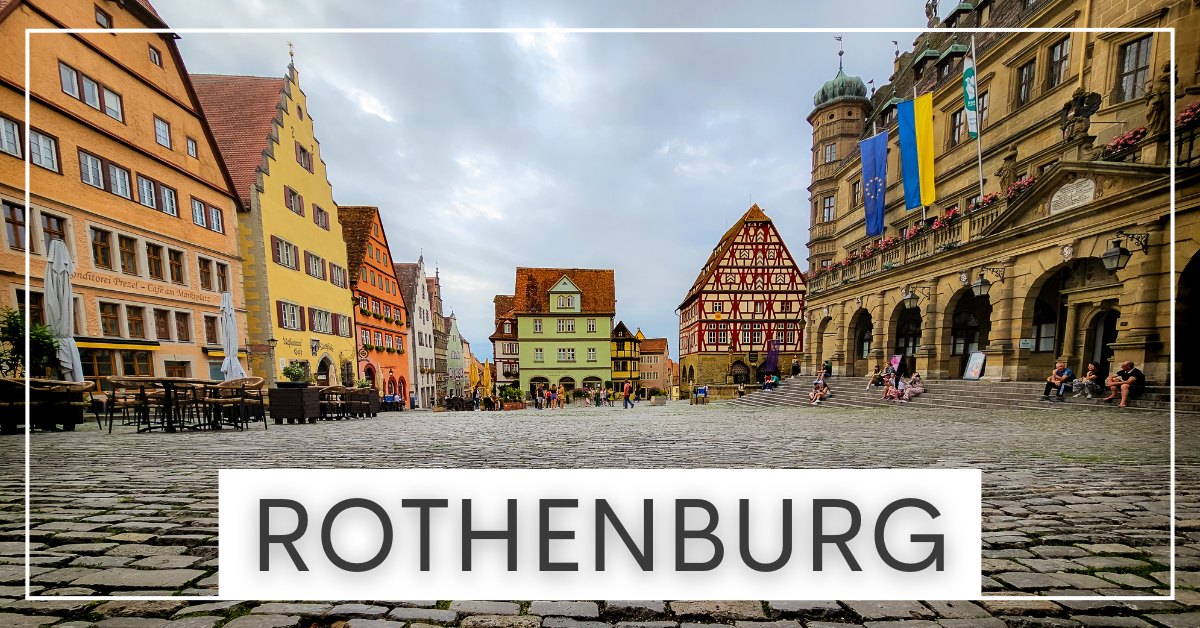
Perched high above the Tauber Valley in northern Bavaria, this picturesque city is what happens when a medieval town decides to ghost the 21st century.
So get ready as we explore the best things to do in Rothenburg, your go-to guide for the best of the past and present.
On this page:
A Dash of History: Every Fairy Tale Needs a Backstory
Before I go into my "best things to do in Rothenburg" guide, let's rewind the clock. Back in 1274, Rothenburg was given "free imperial city" status by the Holy Roman Emperor.
This was basically the medieval equivalent of a get-out-of-jail-free card, and it meant the city answered to no one but God himself (no pressure).
This free pass turned Rothenburg into a medieval hotspot, attracting poets, scholars, and artists faster than you can say, "Hold my beer." The result? A cultural scene that landed Rothenburg on the map.
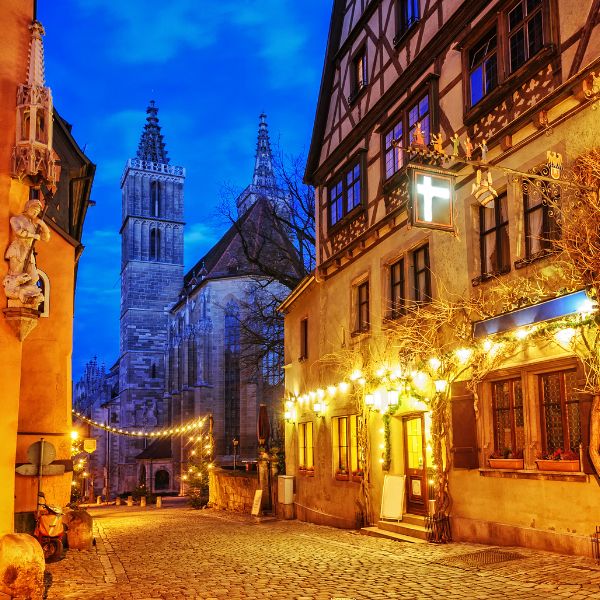 Simply medieval, but with an added electricity bill.
Simply medieval, but with an added electricity bill.Getting There: Final Destination, 1274
By Car
Driving offers the most flexibility and is perfect for those "oh look, another cute village!" moments. Rothenburg is an ideal day trip from Frankfurt or Munich, but trust me, you'll want to stay longer.
By Train
While not as direct as driving, trains are available. Just be prepared for a few transfers—remember the Amazing Race on TV? It's kind of like that, but there's no prize money, less pressure, and no one's watching.
Semi-conveniently, the train station is a short 10-minute walk to the old town center.
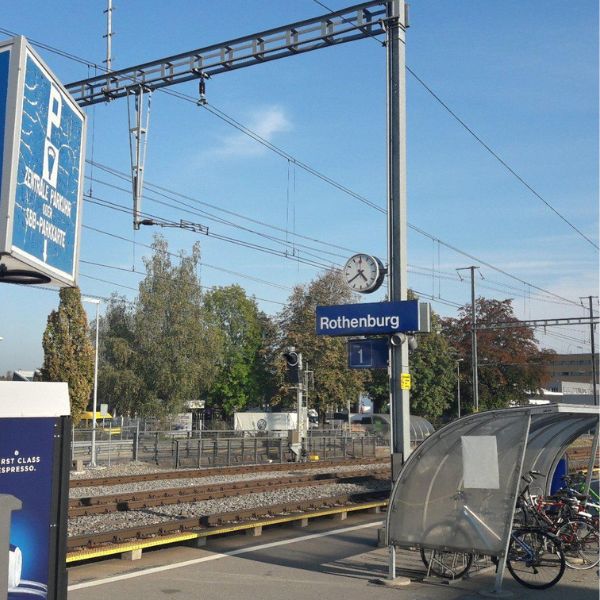
The Romantic Road
For the ultimate German road trip, take the Romantic Road. It's like a highlight reel of picturesque towns and castles, with Rothenburg as the grand finale.
Make sure your camera's charged, as the scenery driving in is really quite amazing.
For more information, check out Lydia's post on the Romantic Road.
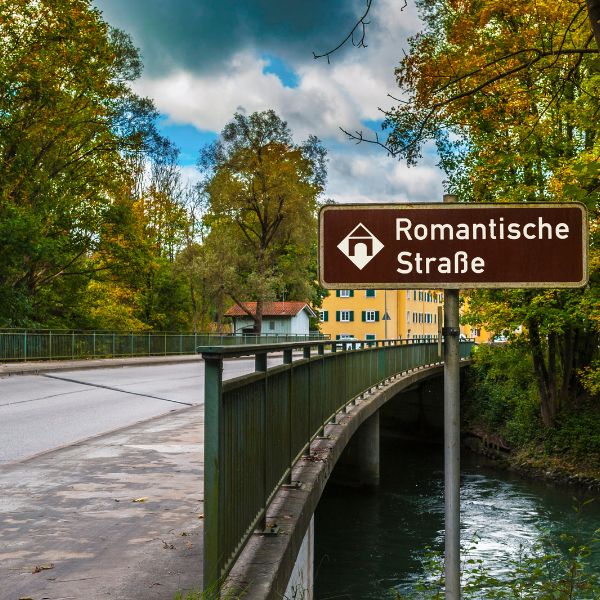
We've partnered with Stay22 to help streamline your holiday booking experience. Using the interactive map below, find your next home away from home. Also added are points of interest that we cover in this post.
Best Things to Do in Rothenburg: 11th Century Style
Walk the City Walls
Start your adventure by scaling the Rothenburg Tower Trail. This 2.5-mile (4 km) route encircles the old town and offers 42 towers to help get your steps in.
This route gives excellent vantage points over all of Rothenburg and highlights why it's one of Germany's best-preserved walled cities.
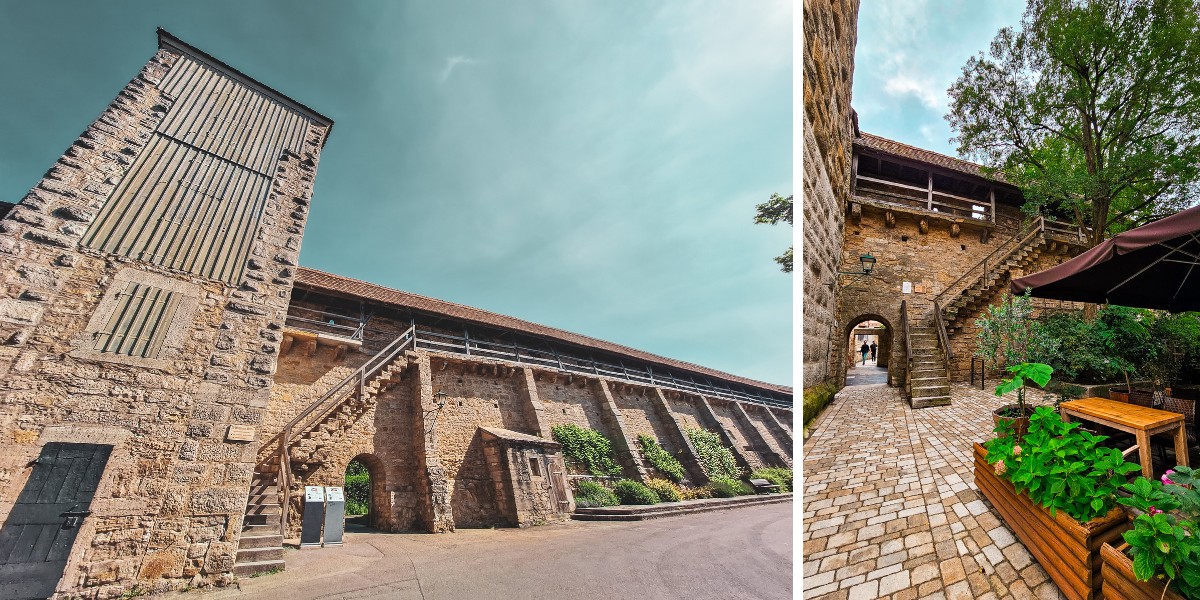 Views of the tower wall from Lydia and Oma's exploration.
Views of the tower wall from Lydia and Oma's exploration.Join the Night Watchman's Tour
If you do one thing in Rothenburg (besides try a Schneeball; more on that later), make it the Night Watchman's Tour. This organized tour is part history lesson, part stage theater.
Visit St. Jakob's Kirche
Step into St. Jakob’s Church and prepare for a unique visual and auditory experience.
Visually, the Heilig-Blut-Altar (Holy Blood Altar), carved by Germany’s legendary craftsman Tilman Riemenschneider, is an absolute masterpiece. By today's standards, it's a fine example of someone being paid by the hour.
Audibly accentuating the Gothic craftsmanship is the Rieger organ, one of the largest in Bavaria.
Free concerts are held throughout the year, and they are definitely worth catching given the chance.
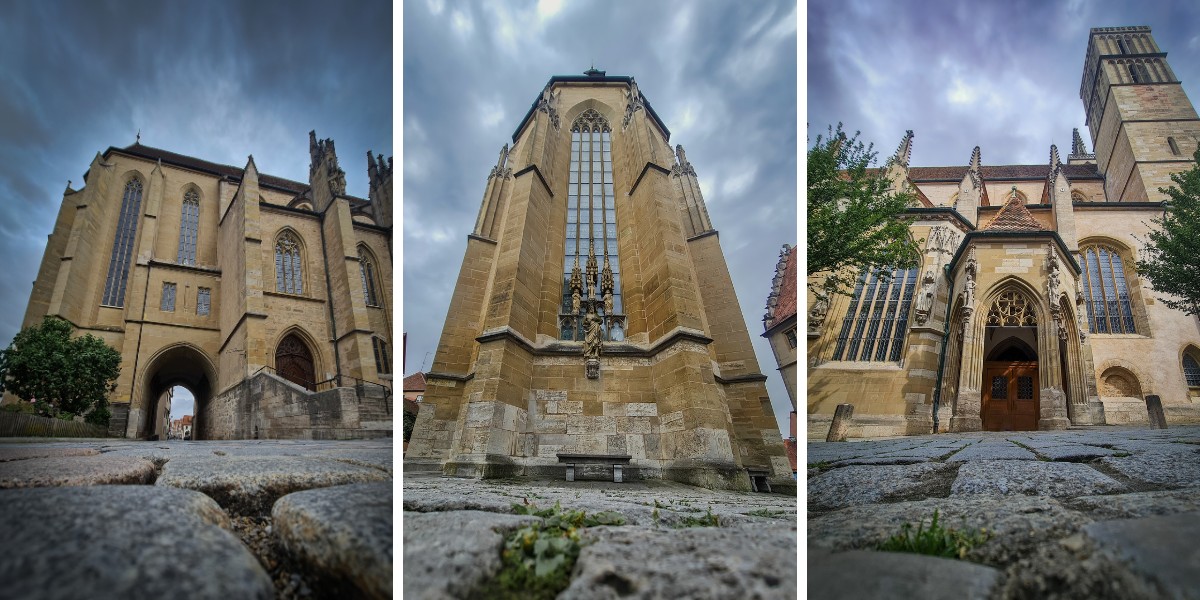 My ground's-eye view of St. Jakob's.
My ground's-eye view of St. Jakob's.Snap a Pic at the Plönlein
The Plönlein, or “little square,” is that picture-perfect spot you’ve likely seen whether you knew it or not.
It’s so quintessentially German that Walt Disney used it as an inspiration for Pinocchio. It also makes an appearance in Chitty-Chitty Bang-Bang and various computer games.
Tip for visiting the square: get there early. After mid-morning, the ensuing crowds will only get in the way of your ideal photo op.
Stroll Through the Castle Garden
Plot twist: there's no actual castle in Rothenburg anymore (thanks to the earthquake of 1356).
But the Castle Garden offers stunning views of the Tauber Valley and a chance to practice your "I'm-a-medieval-noble" pose.
Explore the Market Square
The Market Square (Marktplatz) is Rothenburg's beating heart. Whether you're people-watching from a café, joining a tour, or just soaking up the atmosphere, it's the place to be and an ideal central starting point.
As an added bonus, climb the Town Hall tower for a bird's-eye view.
Get the Creeps at the Medieval Crime Museum
For a glimpse into the not-so-good old days, visit the Medieval Crime Museum. From witch hunts to questionable justice practices, it's a sobering reminder that, no matter how bad your day is going, at least you're not facing medieval justice.
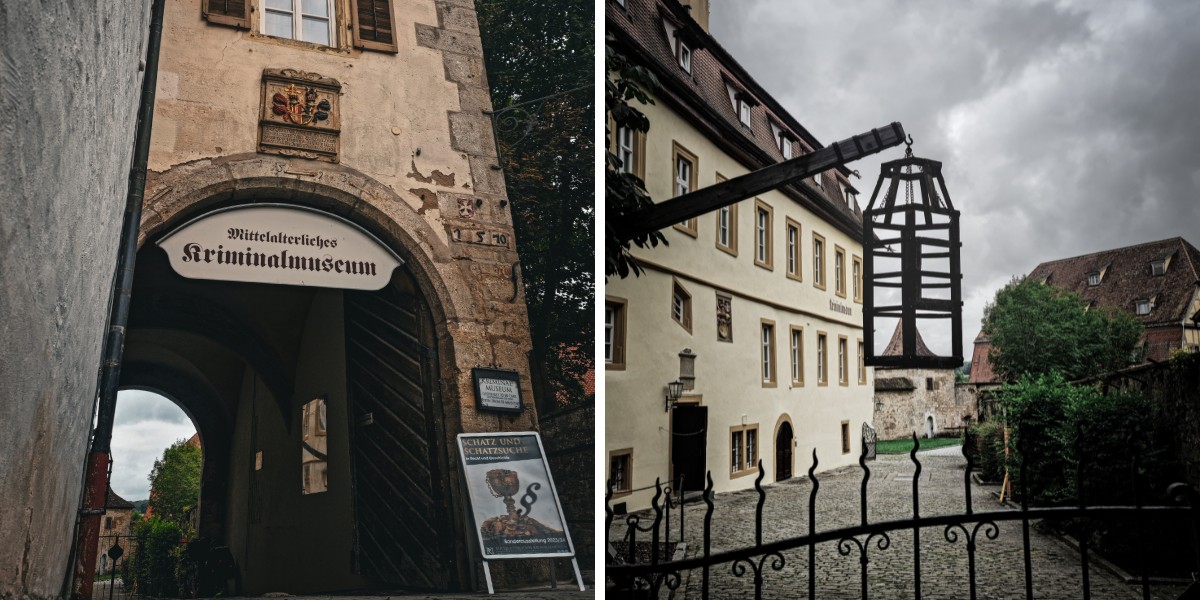 Don't let them catch you hanging around ;-)
Don't let them catch you hanging around ;-)Time Travel at the Rothenburg Museum
Housed in a former Dominican convent, this museum spans eight centuries of Rothenburg history. Don't miss the 13th-century monastery kitchen—it's older than some countries!
Christmas All Year at Käthe Wohlfahrt
Visit the German Christmas Museum and Käthe Wohlfahrt store for a dose of yuletide cheer, no matter the season. With endless Christmas ornaments and decorations, it's like the North Pole, but with better souvenirs.
Simply Wander the Old Town
Getting lost in the old town is one of the best things to do in Rothenburg. With its well-preserved medieval architecture and half-timbered houses, every turn is a new photo op.
Generously speaking, Rothenburg has a fairly small footprint compared to other towns and cities. A full day will get you around most of the town.
Though I'd recommend using Rothenburg as a stop-over. Turn up in the afternoon and have a wander, dinner, and a good sleep. Then enjoy the calm of the morning before setting off at midday as it gets busier.
Festivals: Party Like it's 1399
Meistertrunk (Master Draught Festival)
This festival celebrates the legendary tale of a mayor who saved the town by chugging a massive tankard of wine. It's like a medieval drinking game, but with more pageantry and fewer regrets.
The festival is so well-regarded that UNESCO recognized it as German Intangible Cultural Heritage in 2014. Festivities are held at the end of May.
Imperial City Festival
For three days in September, Rothenburg goes full medieval. There are enough period costumes to make a Hollywood costume department jealous, and there is a torchlight march that will really take you back in time.
Reiterlesmarkt (Christmas Market)
The Rothenburg Christmas market is the stuff of Yuletide dreams. With roots stretching back to the 15th century, it's one of Germany's oldest markets.
From late November, the town transforms into a winter wonderland with twinkling Christmas trees and the scent of glühwein in the air.
The namesake, Reiterle (Little Horseback Rider), derives from a mystically ominous figure who would make a yearly winter appearance carrying recently deceased souls.
Though the Reiterle has become a little less fearsome over the centuries, visitors now look forward to his more earthly arrival through the market.
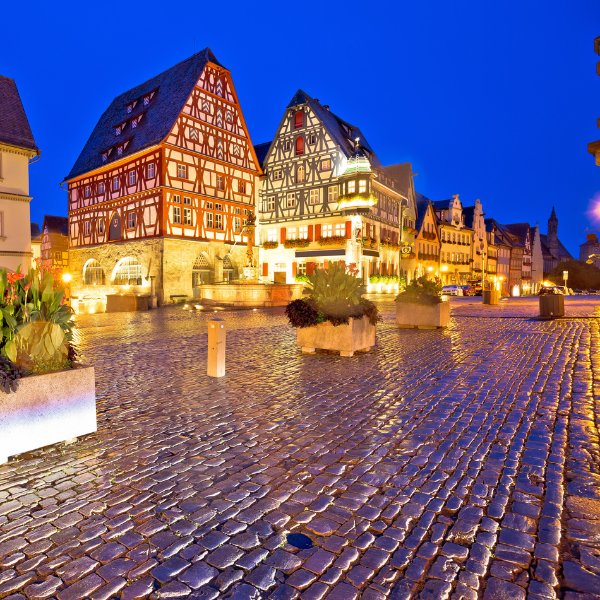
Food & Drink: Sightseeing = Hunger
Try a Schneeball
No list of things to do in Rothenburg is complete without mentioning Schneeballs. These deep-fried pastry balls are a local specialty.
They're like donut holes that went to finishing school.
Also known as a Storchennest (stork’s nest), these Schneeballen have been around for at least four hundred years. The dough is rolled out, cut into strips, and arranged into a ball, which is then deep-fried till golden brown.
Originally given as wedding treats, they are now available throughout the year in bakeries and cafés all around Rothenburg.
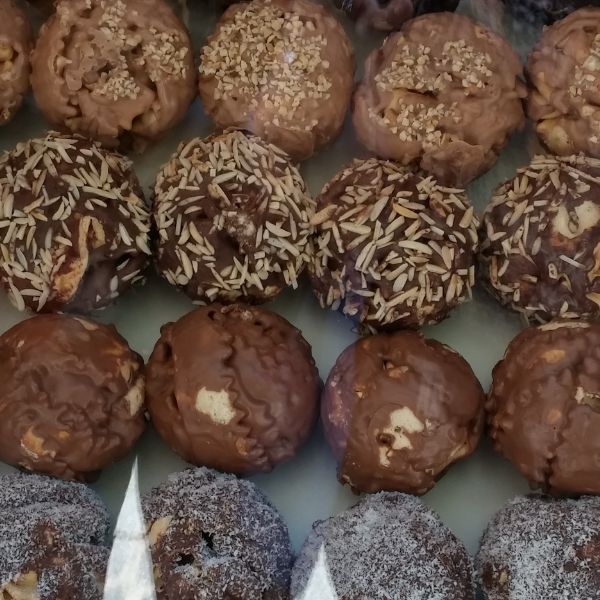 Objects on screen are larger than they appear.
Objects on screen are larger than they appear.Franconian Wine
The nearby Tauber Valley is wine country with 1,200 years of perfecting Franconian wine. Sample some local vintages – it's basically a history lesson in a glass.
Traditional Franconian Cuisine
Hearty meat dishes, potato dumplings, and sauerkraut are staples here. It's traditional comfort food at its best. For a great meal, try Café Einzigartig or one of the other best restaurants in town.
Practical Tips: Because We Care
- Wear comfortable shoes. Those medieval cobblestones are picturesque but ankle-twisting.
- The best time to visit is during the shoulder season (April–May or September–October) for fewer crowds and pleasant weather.
- Learn a few German phrases. "Noch ein Bier, bitte" (Another beer, please) is a good start.
- Book accommodations in advance, especially during peak season and festivals. There are some great hotels within the walled city.
- Consider staying overnight. Rothenburg is magical after the day-trippers leave.
- Public parking is available outside the old town. There are several parking lots just a short walk from the center.
- If you're short on time, a walking tour can help you hit the highlights efficiently.
Final Thoughts
From its well-preserved medieval walls to its quirky traditions, Rothenburg ob der Tauber is a destination that'll make you wonder if you've stepped into a time warp (in the best possible way).
Whether you're a history buff, a foodie, or just someone who appreciates a good fairy tale setting, there are plenty of the best things to do in Rothenburg to keep you enchanted.
So, pack your bags, brush up on your medieval German, and get ready to experience a slice of history that's anything but dry.
Rothenburg Frequently Asked Questions
How many days do you need in Rothenburg? It depends on when you arrive. If it’s in the morning, you can typically see enough of the city in a day. But if you’re arriving in the afternoon, I’d recommend staying the night. This also benefits you, as you’ll experience the evening and the following morning with fewer crowds around the Rothenburg hotpots.
Where do you fly into for Rothenburg? Nuremberg, Stuttgart, and Frankfurt are the closest airports with international arrivals. From there, public transportation links are available with bus and train services. I’d recommend renting a car for the most convenient way to get to Rothenburg.
What is the best time of day to visit Rothenburg? Early morning or late afternoon are the best times to visit. The city is busiest from 11am - 4pm during the height of the summer tourist season.
What is Rothenburg Germany known for? Best known as one of Germany's best-preserved medieval walled towns. More specifically, the photographic appeal of the Plönlein. This small square and its famous half-timbered house have been featured in movies and computer games since the 1940s.
Is Rothenburg worth a visit? Absolutely! It’s like walking into a literal time machine and being transported back to the 1200s. Even just having a stroll through the winding side streets away from the main attractions is a wonderful way to spend some time.
When was Rothenburg o.d.T established?
When was Rothenburg o.d.T established?
950 - 1070 A.D.
What is the land area of Rothenburg o.d.T?
What is the land area of Rothenburg o.d.T?
16.09 sq miles
What is the population of Rothenburg o.d.T?
What is the population of Rothenburg o.d.T?
11,238 (in 2021)
What is the GPS location of Rothenburg o.d.T?
What is the GPS location of Rothenburg o.d.T?
49° 23′ 0″ N, 10° 11′ 0″ E
What are the closest major cities to Rothenburg o.d.T?
What are the closest major cities to Rothenburg o.d.T?
Nuremberg 65 mi
Stuttgart 93 mi
Frankfurt 110 mi
Munich 154 mi



